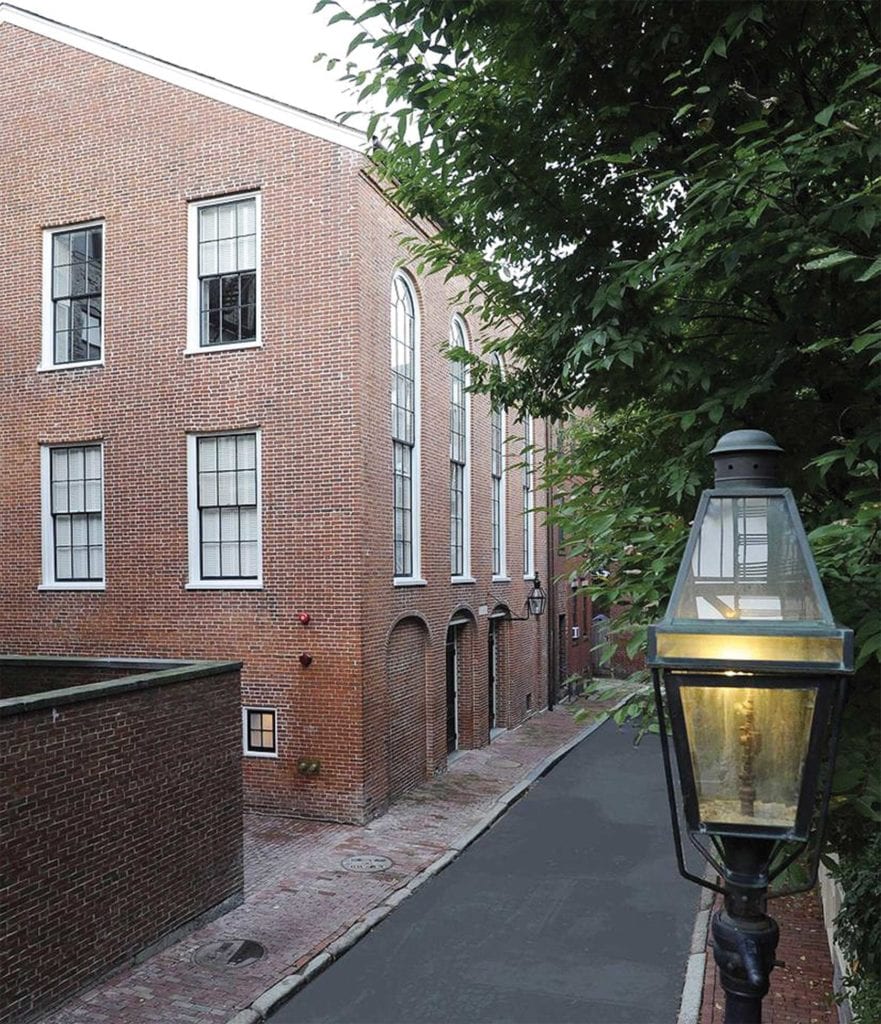
International Underground Railroad Month is underway, and the National Park Service is shining a light on fugitive slaves who made their way through Boston.
The online program “Boston: An Underground Railroad Hub” shows that the Underground Railroad was truly international — a map chronicling the journeys of Ellen and William Craft marks Boston as a critical stopping point before they made their way to Canada. Through a series of videos and interactive story maps, the Boston African American Historic Site brings Boston’s role in the Underground Railroad to life.

“Boston: An Underground Railway Hub” tells the stories of the Boston Black community’s role in the Underground Railroad. COURTESY PHOTO
Shawn Quigley, a National Park Ranger, said the program is a combination of firsthand accounts from each historic life, coupled with primary sources with help from the NPS Network to Freedom. Quigley, along with the rest of the rangers at Boston National Parks and Network to Freedom, have worked together to complete the project and appear in videos on the NPS site.
As an extension of the NPS, Network to Freedom focuses on preserving the history of the Underground Railroad.
“As was often the case with the history of the Underground Railroad, technically it was an illegal act, assisting fugitives. You’re breaking the law. So, in order to kind of piece together these stories, you kind of have to look at a bunch of different sources,” Quigley said.
Among the sources is a ledger sheet from The Vigilance Committee, one of two major abolitionist groups run by Blacks in the Beacon Hill community. The ledger sheet lists expenses for housing fugitives from slavery and securing their passage to Canada.
Through the “Boston: An Underground Railroad Hub” landing page on the NPS website, visitors can access more stories, like the case of Shadrach Minkins. Minkins was born into slavery in Virginia and later escaped to be with Boston’s free Black community. Under Fugitive Slave law, slave catchers in 1850 sought to return him to Virginia. “Black Bostonians staged a daring rescue and successfully escorted Minkins out of the city to safety,” the site reads. The story is followed by a map of his travels all the way to Canada.
The Network to Freedom currently has over 600 locations internationally, with dozens in Massachusetts and six in Boston. One of the most well-known is Faneuil Hall, which was not only an important site to the American Revolution, but a meeting place for abolitionists.
“Boston’s history doesn’t just stop with the American Revolution,” Quigley said. “The stories of the Underground Railroad, of the abolitionist movement and Boston’s free Black community, I think are great examples of individuals coming together, facing extreme adversity and doing what they feel is right.”
The series also looks to highlight the maritime Underground Railroad, which Boston, as a port city, was a large part of. A video featuring Quigley titled “Safe Harbor” explains the beginning of the maritime branch — a fugitive slave named Phillip Smith jumped overboard from a ship and swam to Lowell Island in freezing water.
“The story of Phillip Smith’s escape from slavery may seem like an outlier,” Quigley says in the video. “Interestingly enough, Smith’s method of escape grew fairly common.”
Journalists at the time marked the frequency of former enslaved people hailing ships headed to Boston to gain contact with abolitionists in the North and eventually join free Black communities like the ones in Boston or head out of the country.
Throughout September, while Network to Freedom sites all over the country share their history, Boston National Parks will share more story maps of the journeys of enslaved people and abolitionists who maintained the Underground Railroad, including Thomas Sims and Anthony Burns. They will also release videos to accompany the interactive maps.
The stories are important to tell, Quigley says, because they show Black people who stuck to their journey despite very real dangers.
“I know [the stories] pretty well and I’ve talked about them a lot. They still get you,” he said. “I still love being able to get a chance to talk about these things to folks, and they’re inspiring.”







